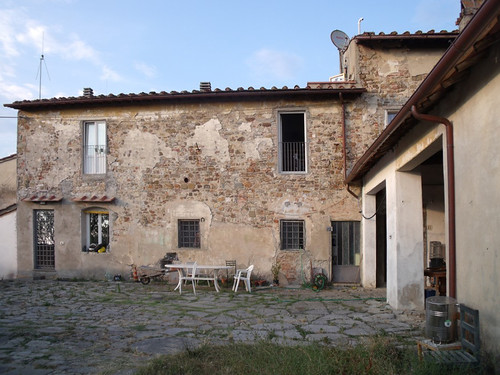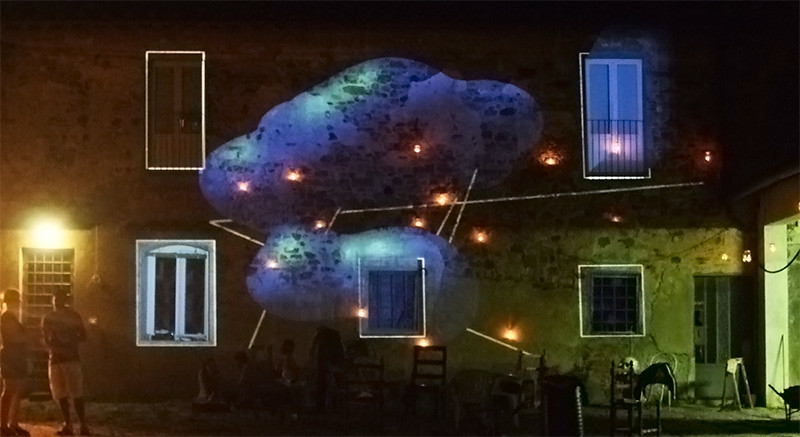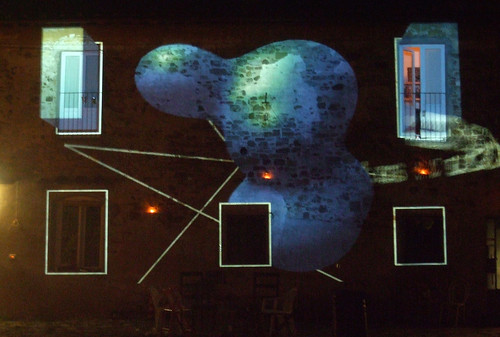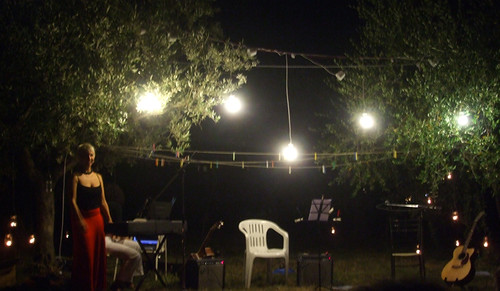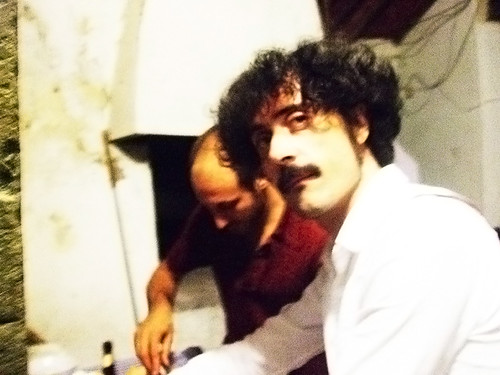WhoMadeMyLastPoetry - Where we came from (Feat. Shinii) Official Video
Save the Thought
save the thought from Davide Di Franco on Vimeo.
audio-video installation/performance.
http://www.out-of-sync.org
+
http://www.didif.it

Giorgio Brogi Save the Thought - set design and live media
for further details see generating stream
where

∞r water circle av perf (project)
live video mapping on audio performance
dubit+t-fata
further details http://t-fata.blogspot.com/2011/02/r-water-circle-av-performance-project.html
In un sistema finito, con un tempo infinito, ogni combinazione può ripetersi infinite volte. 'Eterno Ritorno' Friedrich Nietzsche.
L'eterno ritorno è un concetto applicabile anche alla vita umana: ogni evento che possiamo vivere, l'abbiamo già vissuto infinite volte nel passato, e lo vivremo infinite volte nel futuro.
Tutti gli eventi naturali sono caratterizzati da trasformazioni cicliche. Essendo le cose finite ed il tempo infinito, sarà sempre presente un ciclo temporale ripetibile che risulterà più o meno comprensibile dalla mente umana.
Questa rappresentazione illustra in forme audiovisive il ciclo dell'acqua sulla Terra. Questo evento naturale viene spogliato dagli aspetti più contingenti e viene raccontato sotto forma di movimenti, aggregazioni e disgregazioni di molecole che compongono le masse d'acqua nei suoi differenti cambiamenti di stato. C'è allora un profondo legame che vincola le trasformazioni di tutte le "masse" naturali, di cui fa parte anche il comportamento della "massa" umana. I fenomeni diprecipitazione, evaporazione o flusso sotterraneo sono fenomeni che interessano masse di molecole e direttamente riconducibili ai comportamenti della collettività.
L'audiovisione racconta questo parallelismo acqua-uomo attraverso 6 ambientazioni non nettamente distinte e attraverso il doppio linguaggio digitale-analogico. I semplici movimenti delle entità fisiche sono raccontati attraverso il freddo segnale digitale (oscillazioni elettroniche nell'audio e vettori immersi campi cromatici nel video). Il segnale analogico, suoni campionati e riprese video, si manifesta attravero brevi inserti e rappresenta brandelli di memoria collettiva, vista come insieme di ricordi, più meno consci, di un'esperienza vissuta o mitizzata da una collettività.
> Audio: Alfeo Pier a.k.a. Dubit - dubit@live.it
> Video: Davide Di Franco(t-Fata) - didif@didif.it
*Fotografie di Valentina Muscedra
[Special Thanks to] Coeter One, The Noisemaker, Hanchi, Plaster, Brainstormlab.

generating stream
At a time when everything is virtual, when everything changes rapidly and changes with us, painting in real time with the light becomes a shared experience to capture the fleeting moment of creation. A shaft of light that generates an emotion through the colours, the sign of an “eye” that captures the images of the present. All the possible images from the media jelly that turns communication into a many-headed monster. An operation of purging, of return to the essence; first of gesture and then of thought through primary media such as sign and colour. A step back, a stepping outside so as to get a clearer, untainted view of the external
influences in this society of distraction. A rediscovery of the essence of the spirit, the essence of feeling unleashing emotion. Being beyond the frequency of the flows, in order to become a flow that generates
sensations and stimuli: a continual flow. No new languages, no new constructions, simply pure purged reality, essential and concrete. A real present, authentic and vital
This is an improvised performance, based on the processing in real time of a continual and chaotic flow of digital information.
A source, a complex original signal, is emitted by an initial electronic element, the TV, in an unpredictable and chaotic manner. This is then received and decoded by another electronic component, the web-cam, resulting in two further emissions: one manifest which will become visible on the screen, and the other silent and codified which is transmitted to the other two electronic receivers. These will decode the signal received
and in turn reprocess it in a manifest form: the first in visual form and the second in the form of sound. In this chain of communication we can thus recognise two levels: one immanent, silent and invisible pertaining to the machine-machine relation, and the other manifest, audible and visible, pertaining to the man-machine relationship.
The performance will emerge from the reciprocal assumption of these two levels, but only one can be controlled by human action, that of the manifestation. The performers will find themselves having to deal with vast quantities of electronic variables, attempting to translate them into visible and audible substances for the spectators. In this attempt, everything lies in the aesthetic value of the work, in other words in the, possibly futile, intention of immobilising in solid forms a formless fluid in continual regeneration. The work is proposed to the spectator in the manner of a huge visual and audio kaleidoscope, in which the recognition of intelligible shapes or discourse will be only fleeting and illusory instants. Brief flows of transient emotions.

Quintetto Luminanza
Telesystem
Here's an ecological tool to improve human mood in this world of numbers. Telesystem re-uses the digital informations (just bytes) and convert them into audio-visual compositions (lots of feelings).
Telesystem produces sounds compositions from images analysis.
The images read by the system are pictures shot in real-time made by all the not too slow and not too fast movements. The pictures can be shot in 8 different areas of the screen, where the movement is not too slow and not too fast. The bytes of png files just saved(placed in the corresponding screen slice) are translated into notes (256 ascii possibilities>>128 midi possibilities) and read by a 8 glitch audio tracks in a 16 steps sequencer.
BELOW: the performance/installation, where the performer or the visitor plays with his delayed images and audio sequences. Ideally the installation would need about 16 sqm.
Hardware needed
1 video projector (VGA input), 1 vga cable, 1 white screen or 1 lcd monitor
1 audio amplifier, 2 speakers (got into proportion with the space)
Software used:
video: vvvv (www.vvvv.org)
audio:Plogue Bidule (www.plogue.com)
Hardware brought:
1 Laptop
1 Dv camera
Configuration
Patching:
audio-video programming> Davide Di Franco
ROSPO Eco-6
“Music does not express any idea and gives birth to thousands”.
(“Alessandro Manzoni for Radio Classica” FM 99.4 in Florence)
Rospo Eco-6 is a digital system that produces sounds generated by moving images in real time. Eco= from greek: οίκος, oikos= environment; 6= is the number of areas that analyze the image and produce 6 different sounds.
Eco-6 is a tool able to enrich and refine the visual perception of space. This happens through a visual exercise of environmental analysis, in search of compositions and rithms that ever-changing reality continuously offer to the “inattentive” eye. This reality can be either spontaneous (e.g. an urban environment) or purposely designed (scenography/choreography).
The sound. Sound is created by the variety of physical changes in the shot pictures. These changes are shot by a camcorder and then circumscribed on video into 6 areas (each subdivided into 16 parts), able to track movements uniformity and translate it into 6 sounding signals with 6x16 different characteristics. Sound can be generated in two ways:
- virtual oscillation
- real time audio sampling
The picture. What is shown by Eco-6 is nothing else than moving reality, divided into 6x16 parts. When there are no physical changes no part of the picture is shown.
Technical specifications for an Eco-6 module:
Hardware:
- -1 DV Camcorder + tripod
- -1 microphone
- -1 laptop
- -1 projector
- -1 audio mixer
- -1 audio amplifier system
Software:
- -vvvv
- -plogue
Technical requests:
- -1 projection surface of at least 3,2 x 2,4 meters
- -good illumination in the areas to be shot. As an alternative, previously recorded videos (mini-DV tapes) can be used.
- -possibly a projector



APPLICATIONS
Eco-6 drumming & performances
instruments and virtual instruments played by body or camera movements
Eco-6 city play
looking for urban rhythm. This movie was taken at a crossroad, close to Arno river, in Florence. The city play performance shows urban landscapes played from the DV tape of the camcorder(city play). In the same way, the urban landscape can be represented in live mode as an urban installation(city shoot, soon online).
ROSPO systems

The main goal of ROSPO systems is to be the core of a bigger creation process in which the architect takes part as "data selector" and "audiovisual suggestions user". The machine produces audiovisual paintings according to a range of data to process that come from real world.
The name "rospo" comes from the italian noun for "toad". The behaviour of this machine is very similar to a toad: extremely sensitivity to movements coming from environment. Every kind of "reaction" of Rospo system will be due to the audiovisual trasformation of the environment.
It consists in a DV camera, to get audiovisual data from environment, a laptop to processing, and a projector to let perceive the augmented reality.
Rospo is not a scientific tool, it could become that, but the main purposal is to transport data from system to system. Rospo will always draw a fluid and dynamic representation, always in transformation, regardless of the place where it is, because the present is always in continuous transformation, even in a desert.
The purposal, in this case, is to induct the machine to build Spaces system from active Bodies system catched in real world. The audiovisual suggestions will give us an idea of an extremely organic space, that is the transformation in forms of human behaviours.
here is a DATA vs INDUCTION scheme.
CLICK to maximize the image

draft of a flexible installation:

oniroNAUTA
3 months: that's how long this work lasted until this result: the OniroNauta.
DOWNLOAD THIS RESUME (video, slideshow and text) -3,60 MB-
The following text is the diary of a work done imagining a situation of intimity inside the mind, dreaming, remembering, interacting.

Il mondo intorno è sfumato, la sequenza delle azioni segue logiche non-lineari. Ciò che conta è la dimensione soggettiva.
july 22
DentrodiTre_
MEMORIES#01



DREAMS#02



...
july 21
working on the space

july 15
DentroDiTre
dreams, memories and crashes
3 non-linear steps in mind.

If you want to know more, we are going to have the first test of this performance in nemogruppo's garden on 27th july, 21.00 h .
Here you can download the last draft of the first draft of the whole digital system: audio, video, algorithm.
If you want to try to use this patch to work on your pc, you have to download vvvv, download the package, connect a camera (or a webcam) to pc and point it towards a backlit white panel. Moving objects through the space between camera and panel, you will see three kinds of changes in audio and video.
You could use it for other aims if you change sounds and textures.
Let us know: t-fata@nemogruppo.com
july 5
programming: memory> motion> interferences

july 3
bianco.
di valentina muscedra
bianco come il bianco delle pareti di una stanza, che smaterializza le cose e le trasforma in sensazioni o in ricordi lontanissimi...






june 30
Della natura di una stanza | the way things are...
di valentina muscedra
Ogni stanza, nonostante la sua immobile esistenza, è un ricettacolo di esperienze emotive captate nel quotidiano (umanamente) vissuto dei suoi abitanti. Su di esse, sul bianco apparentemente neutro e indifferente degli intonaci, come ricordi riaffiorano le proiezioni degli stati d'animo o delle esperienze che gli uomini hanno vissuto.
Le pareti di una stanza così riportano le tracce dei suoi abitanti, manifestando quello scambio osmotico che si realizza tra l'uomo e la sua casa. Di qui quel senso di appartenenza che gli uomini hanno con il luogo che abitano, come se la casa fosse una sorta di estensione del loro corpo, del loro carattere: è quella forma di empatia che l'uomo da sempre, quasi senza saperlo, ha con le pareti delle sue stanze (v. post 26-06).
La stanza, dal canto suo, costretta dalla natura statica del suo essere parete-nient'altro-che-parete, assorbe con entusiasmo le vitalità dinamiche dei suoi abitanti, i voli pindarici delle sue fantasie e quelli caotici dei ricordi confusi che nel tempo si affastellano disordinatamente nelle memorie, e vive questi momenti come una sorta di riscatto per la sua pesantezza e per l'immobilità che la costringono a restare là dove l'hanno eretta; intercettare immagini è un modo per saziare la curiosità di sapere cosa c'è fuori dai suoi confini murari.
Così le pareti delle stanze, quando restano sole, si accendono, si popolano di persone, si aprono su panorami di paesaggi ampi e luminosi..., ciò nonstante tutte le stanze hanno un'innata "timidezza", una debolezza che le porta a nascondere scrupolosamente la refurtiva che ogni giorno rubano alle nostre immagini mentali e le fa apparire così come comunemente appaiono: pallide e indifferenti.
Anche la nostra stanza, timida come le altre, alla presenza di qualcuno nasconde la sua vera natura e improvvisamente si ammutolisce: silenziosamente e pazientemente ritorna fondo neutro, ma in segreto intercetta emozioni...
(ma... forse, piuttosto che parlare di timidezza della stanza, non si dovrebbe parlare semplicemente della sua prima natura, quella che la chiama ad essere sostanzialmente solo una stanza con 4 pareti, un po' di arredi e nulla di più ?)
june 26
La psicologia dell'empatia.
di guido incertiPubblica post
Nell'architettura la sensibilità degli oggetti di rispecchiare le condizioni del corpo fu teorizzata per la prima volta sul finire del IXX secolo entro quella che era la neonata psicologia dell'empatia. Wolfflin a proposito nel 1886 scrisse: " Noi giudichiamo agni oggetto in analogia con il nostro corpo. Non solo esso per noi si muta-anche se di forma diversissima-subito in un essere con capo, piede, fronte e tergo; non solo abbiamo la convinzione che esso non possa trovarsi bene se è inclinato o se minaccia di cadere, ma, con una incredibile finezza dei sensi, abbiamo anche la sensazione della gioia o del malessere nell'esistenza di qualsiasi configurazione o di qualsiasi immagine, per quanto sia da noi lontana".
Mi sembra che rispecchi molto la "stanza timida".
Inoltre come non ricordare che nella teoria classica il corpo( idealizzato) era proiettato di rettamente sull'edificio? O che l'edificio era espressione stessa della armonia del corpo? Leon Battista Alberti insegna...
Quindi alla fine di tutto il discorso anche se non sembra la nostra timida stanzina e nipotina niente popo di meno del vecchio, bello e caro Uomo Vitruviano (di Leonardo?)...che dovrebbe essere secondo me bello presente nel video....ricordo della nostra bambina...ricordo del suo nonno...
june 23
draft of the set skeleton made up with vvvv

june 21
Ciao dario,
di seguito, la breve presentazione che mi avevi chiesto per partecipare all'evento (prendila, ovviamente, come una bozza, suscettibile di cambiamenti).
Circa la preferenza da esprimere sulla stanza: optiamo per la camera da letto.
Aspetto tue conferme per il sopralluogo di martedì (...tardo pomeriggio/sera?)
saluti
vale
LA STANZA TIMIDA | Ogni stanza ha la sua natura
Le pareti di una stanza, di qualsiasi stanza, in qualsiasi casa conservano le tracce di suoni e immagini di un vissuto che non appartiene direttamente a loro, ma a chi quelle stanze ha animato, anche solo per un istante (E' una specie di ricordo o forse il sogno di come si immaginano essere il mondo che sta fuori di loro...)
Nella loro solitudine, le pareti sprigionano le energie assorbite silenziosamente nel tempo, nell'immobilità del quotidiano vivere e quando il loro equilibrio viene perturbato dall'ingresso di nuove persone, la stanza rientra nella sua natura: si fa timida e tace...
june 20...chats

